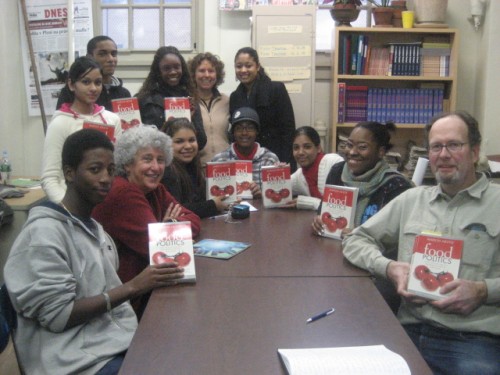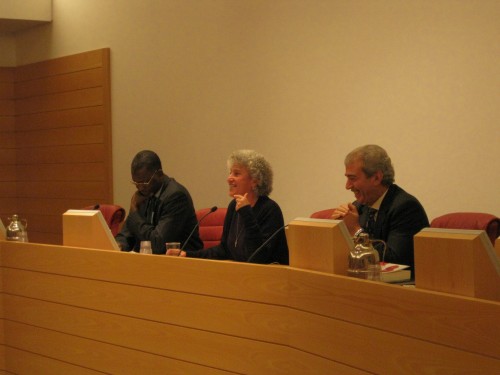Facts and rumors: the current status of S. 510
Following the ongoing saga of S. 510, the Food Safety Modernization Act, is like taking a graduate course in political science. And sociology graduate students everywhere should be writing dissertations on how a bill designed to help protect the public from food hazards like Salmonella and E. coli O157:H7 became a flashpoint for debates about the role of government in personal choice.
Let’s start with the rumors. I’m hearing from sources inside the Beltway that the Senate and House have agreed to pass S. 510 in part because they can use it to get something else they want: repeal of an annoying provision in the health care reform act passed last spring that requires 1099 tax reports for business purchases.
The Senate is said to be dealing with S. 510 late in the afternoon or early evening of Monday, November 29. It is supposed to work like this:
- There will be a cloture motion, which will pass with 60 votes.
- The Senate will agree that all amendments to S. 510 will require 67 votes.
- Senator Coburn will offer amendments, but they will not get 67 votes.
- The Senate will add language repealing the 1099 tax provision.
- The Senate will pass the bill (this needs 51 votes)
- The House will agree to accept the Senate bill as written with no changes.
- The bill will get sent to President Obama to sign before Congress adjourns.
- The President will sign the bill.
Maybe, but this does not sound like a done deal to me. For one thing, opposition to S. 510 seems to be getting noisier. Remember the adage “politics makes strange bedfellows?” Take a look at the groups who now oppose the bill, united in their opposition to giving the FDA or government any additional authority:
- The health food industry
- The dietary supplement industry
- The meat industry: American Meat Institute, Cattlemen’s Association, etc.
- The Tea Party
- The raw milk community and its legal arm, the Farmer to Consumer Legal Defense Fund
- Some, but by no means all, small farmers and advocates for them
Missing from this list is Big Agriculture, an absence explained by the fact that the bill does not apply to feed commodities or to seeds.
As for the Tester amendment exempting small farms from certain provisions of the bill: It is opposed by 20 organizations of vegetable growers, and is also is likely to be opposed by companies like Monsanto which do not want the FDA making safety decisions based on size or anything else except risk.
Caroline Scott-Thomas writes in FoodNavigator-USA that all food producers, large and small, should be producing food safely, not least because bacteria do not care how big a farm might be:
Think about it: If a large-scale cheese maker refused to recall potentially tainted products for financial reasons, as the Estrella Family Creamery is doing, would it inspire dewy-eyed sympathy? I doubt it.
I agree, and also with the comments of Bob Whitaker, the Produce Marketing Association’s Chief Science Officer, who points out that plenty of growers are already using preventive controls like the ones requires by S.510:
There are a lot of very small growers who are already doing this. I think there is plenty of evidence where growers have already made this a priority and they have been able to do so in a pretty innovative manner. There is a cost to this…But it doesn’t have to be overwhelmingly expensive. A lot of this is common sense. People need to dive in and understand that this is food and you have to take responsibility for the safety of our food, to the extent that you can… Consumers have to be confident that our products are safe.
I’ve seen this too. Lots of small food producers do everything they can to reduce microbial risks. They don’t need a government agency to tell them what to do.
Others, however, won’t take safety steps unless forced to. That’s why we need this bill to pass.
In the meantime, the debate continues. USA Today, long concerned about food safety, favors the bill. Senator Coburn, however, does not.
Happy Thanksgiving holiday, everyone.
And special thanks to Carol Tucker Foreman of Consumer Federation of America for cluing me in on the latest developments.
Addition: Safe Tables Our Priority (STOP), a food safety advocacy group formed originally by parents of children harmed by eating fast-food hamburgers, strongly favors S. 51o. Under its auspices, 80 victims of foodborne illness have written a letter to the Senate in the hope that this will help solidify support for passing this bill.
Many of us have traveled to Washington D.C. numerous times to meet with lawmakers, sharing our personal stories as to why stronger food safety laws are necessary; others of us have written opinion pieces, letters, and blog entries urging action on this important legislation. S. 510 would be the first major overhaul of the FDA’s food-safety authorities in decades. It is time to pass this legislation.





